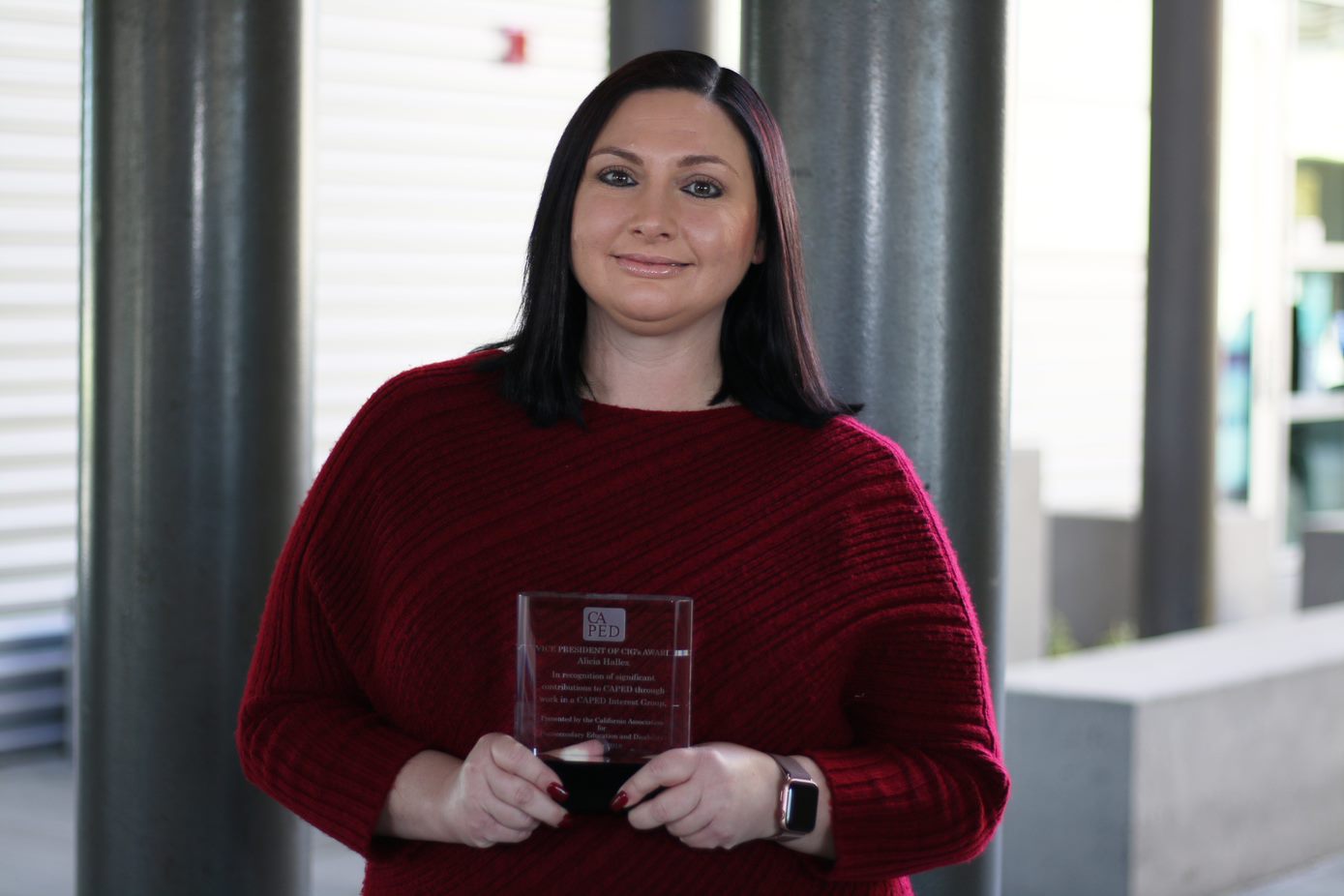DSPS Specialist Awarded by State for Contributions to the SBVC Disabled Community
 About 300 students turned out for the first of its kind Disabled Resources Fair at
San Bernardino Valley College, which helped raise awareness of numerous available
services both on and off campus. For the first time, many students at San Bernardino
Valley College are breaking through barriers to learning as they independently navigate
college campus life and onto successful adulthood.
About 300 students turned out for the first of its kind Disabled Resources Fair at
San Bernardino Valley College, which helped raise awareness of numerous available
services both on and off campus. For the first time, many students at San Bernardino
Valley College are breaking through barriers to learning as they independently navigate
college campus life and onto successful adulthood.
Alicia Hallex, Learning Disability Specialist at SBVC said incoming students may not
realize all the help they can access with the adult version of services they received
while in K-12. “What tends to happen is the students don't pay attention to what's
available. Mom and dad always did it for them,” she said.
At the fair, students with intellectual disabilities learned about services they may
not have known existed, such as work assistance, and the Vocational Improvement Solutions.
Guide dogs are available for those who have recently become blind, or with low vision.
Some may not be aware they can receive audio versions of their books.
“We had student club tables out so students could integrate and get used to campus
life, and off-campus resources such as programs at the Inland Regional Center, Guide
Dogs of the Desert, a floor hockey team for students that have mobility impairments,”
Hallex said.
The Disabled Student Programs and Services (DSPS) office has resources across multiple
intersections, including students with learning or intellectual disabilities, mental
health impacts, acquired brain injury, physical disabilities, vision impairment or
no vision, deaf or hard of hearing.
Among the many accommodations offered are a distraction-reduced testing environment,
electronic text to listen to the reading as opposed to reading the printed word. They
offer braille, interpreters for students that use sign language, as well as a number
of adjacent resources and programming for students that need extra help.
Autistic students or those with ADHD can receive support relative to their disability.
Students served in high school with an IEP (Individualized Education Program) would
most likely qualify for services with SBVC. For instance, the Inland Regional Center
or Department of Rehabilitation also helps with work or educational assistance.
“These are the programs that can have a continuity of service once they get here,”
she said. “We try to inform of that, and get them set up if they qualify.” On campus,
DSPS services about 900 to 1,000 students, or roughly 10% of SBVC student population.
The fair was held within the campus center walkway, offering a one-stop shop of resources
for all programs available on campus, such as EOPS and their Veteran Center. Students
learned how to connect with student clubs, which offers a support system so they don't
have to feel isolated.
Particularly for students with learning disabilities, she said the clubs are important
to the college experience to foster campus engagement. Having that outlet provides
the social component. “In K-12, they were just with Special Ed kids. Now, they're
getting more exposed to diversity, and that's important to their whole life experience,”
she said.
For her dedication to the field of service, Hallex has also been recognized with an
award from the California Association in Post-Secondary Education and Disability,
CAPED, a professional organization that she is a part of. Within that organization,
she serves as the Southern Co-chair of Southern California Learning Disabilities Interest
Groups (CIGs), primarily focused on community college, as well as university level
practitioners.
“All of the learning disability specialists within the state of California get together,
exchange ideas, keep abreast of current legislation, and make decisions based on that,
and recommendations to our larger organization, CAPED,” she said.
The first time fair was such a hit for the students, and she said they are excited
by the strong buy-in from the Student Equity Office, which helped fund the fair. They
are looking forward to growing and holding the event annually. “We are grateful, a
lot of students enjoyed it, they really found it useful, they found the resources
they need. Overall, they felt like they were part of something bigger,” she said.

